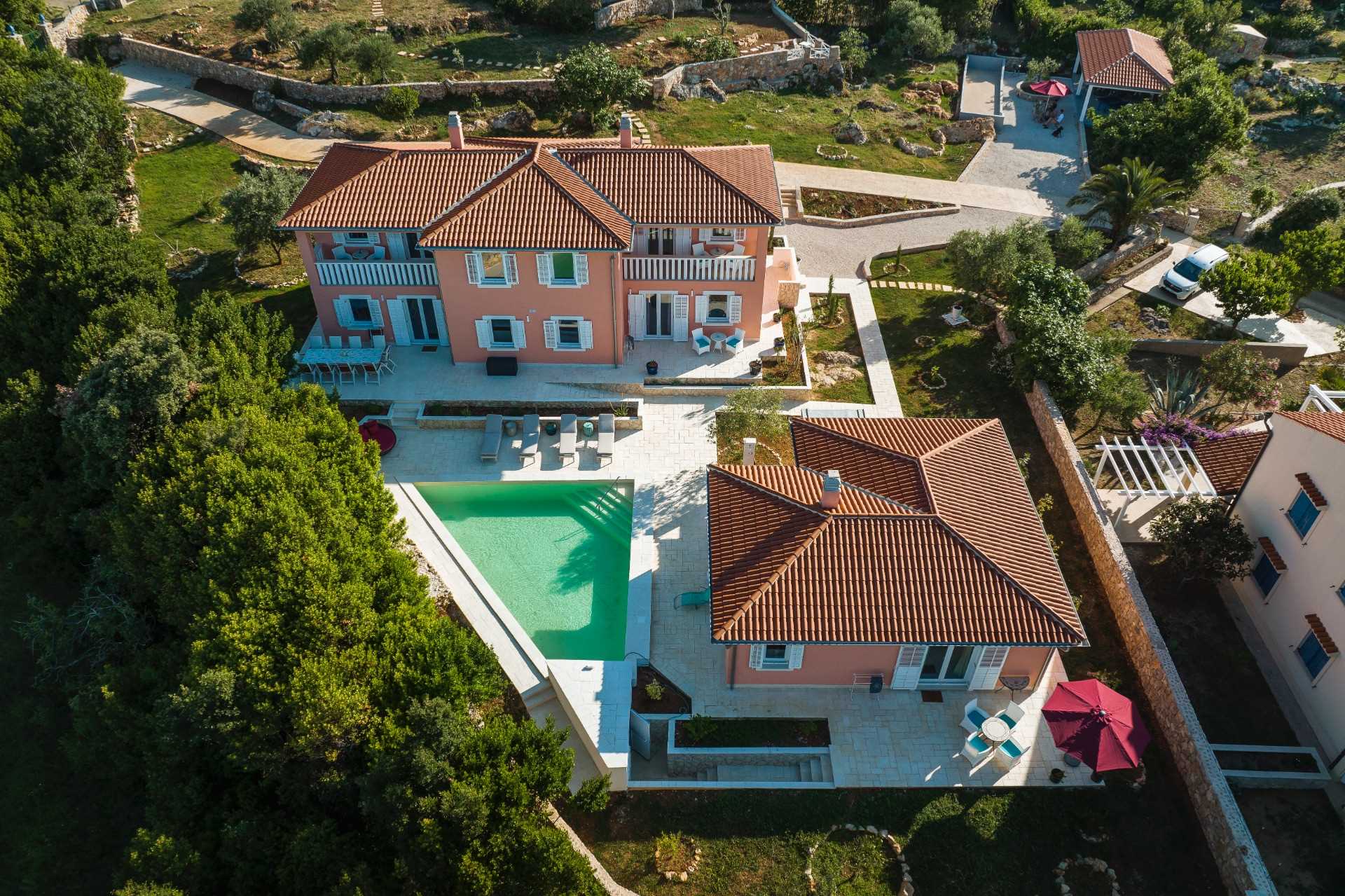
Culture and history
Culture and History: The Timeless Charm of Lošinj
The fascinating history of Lošinj Island stretches back to the Neolithic and possibly even the Paleolithic era. Over time, the island has been home to a myriad of cultures—from the ancient Illyrians and Liburnians, to the Greeks, Romans, and even Austrians and Italians. Today, the Croatian spirit lives on in every corner, enriched by the layers of these diverse influences. But one legend, in particular, stands out: the myth of Apsyrt, which gives the islands their ancient name—Apsyrtides.
Apsyrt was the son of King Aetes of Colchis, and he tragically met his end at the hands of Jason, an Argonaut, after his sister Medea lured him into a deadly trap. His dismembered body, tossed into the sea, is said to have formed the Apsyrtides—this captivating legend still echoes through the islands' names and folklore.

Ancient Tower: Tower of Veli Lošinj
In the 15th century, the Venetian rulers built a round defensive tower to protect the town of Veli Lošinj. This Renaissance structure, with its thick walls and outward-leaning upper levels, was designed to withstand cannon fire and repel invaders. The tower's parapet has been altered over time, but the structure remains a testament to the town's maritime defense against Turkish and Uskok raids.
After centuries of neglect, the tower underwent restoration in the 20th century. Today, it stands proudly as a museum and gallery, welcoming visitors to explore the history of Lošinj’s maritime past.

Church of St. Anthony: A Baroque Beauty
The Church of St. Anthony, with its soaring bell tower, is a stunning example of Baroque architecture. Originally built in the 15th century, the church was rebuilt in the 17th century and again in the 18th century. It houses the largest collection of art from the Kvarner region, thanks to the wealth of local captains who competed to adorn their parish church with exquisite paintings and altars.
Today, the church remains a beacon of Lošinj’s rich maritime history, offering a glimpse into the golden age of navigation when Lošinj’s captains sailed the seas, bringing back treasures and artworks from around the world.
The Legend of St. Gaudentius: A Miracle of Snakes
St. Gaudentius, a Benedictine bishop, was exiled from Osor for denouncing the sinful ways of the town's people. He spent his days as a hermit on the mountain peaks, and according to legend, he rid the islands of poisonous snakes by invoking divine intervention. Today, there are no venomous snakes on Cres and Lošinj, a fact locals attribute to St. Gaudentius’ miracle.

Susak's Costume: A Living Tradition
Susak Island is famous for its unique traditional costume, which differs greatly from the typical attire of the region. Instead of long skirts, the Susak costume features mini skirts, with multiple layers and designs that reflect various historical influences. Whether for daily wear or special occasions, the costume is an integral part of Susak's cultural identity.
The costume is made up of distinct elements: colorful skirts, ornate vests, and hand-made shoes called “pute.” The costume is often adorned with bright ribbons, tassels, and lace, creating a strikingly vibrant look that remains a symbol of Susak’s heritage.

The Apoxyomenos Statue: A Masterpiece Unearthed
In 1996, a Belgian tourist discovered a bronze statue of the ancient Greek athlete Apoxyomenos off the coast of Lošinj. This remarkable statue, dating back to the 1st or 2nd century BC, was expertly restored and is now displayed in the Museum of Apoxyomenos in Mali Lošinj. The statue represents the idealized athletic form, depicting a man scraping oil from his body after exercising, and is a rare and precious glimpse into ancient artistry.
The statue, which was recovered from a depth of 45 meters, was meticulously restored without the use of chemicals, ensuring the preservation of its original patina. Today, the statue stands as a testament to the skill and craftsmanship of ancient Greek sculptors.
Vransko Lake: The Enchanted Waters
Vransko Lake, a freshwater lake nestled on the island of Cres, is a natural marvel. Its water level is higher than the surrounding sea, and it serves as a vital source of drinking water. The lake, with its serene surroundings and rich biodiversity, is also the subject of a captivating legend.
The story tells of two sisters—one rich and wicked, the other poor and good. When the wicked sister refused to help her sibling during a drought, the lake rose and flooded the wicked sister’s castle, which still lies submerged at the bottom of the lake. On stormy days, eerie sounds and bell tolls are said to rise from the depths of the lake.

Nerezinac Lugger: A Journey Through Maritime Heritage
Step back in time and explore Lošinj’s maritime history at the Nerezinac Lugger Sailing Interpretation Centre. This restored 19th-century sailboat, moored at the Riva Lošinjskih kapetana, offers an interactive and educational experience of traditional shipbuilding and life at sea. Visitors can learn the skills of sailors, from knot-tying to sail repairs, while also discovering the stories of the island’s maritime past.
The Nerezinac Lugger is not just a museum piece—it’s a living, breathing testament to the island’s nautical heritage. Experience the thrill of sailing and the artistry of ship maintenance while exploring the rich history that has shaped Lošinj’s identity.






